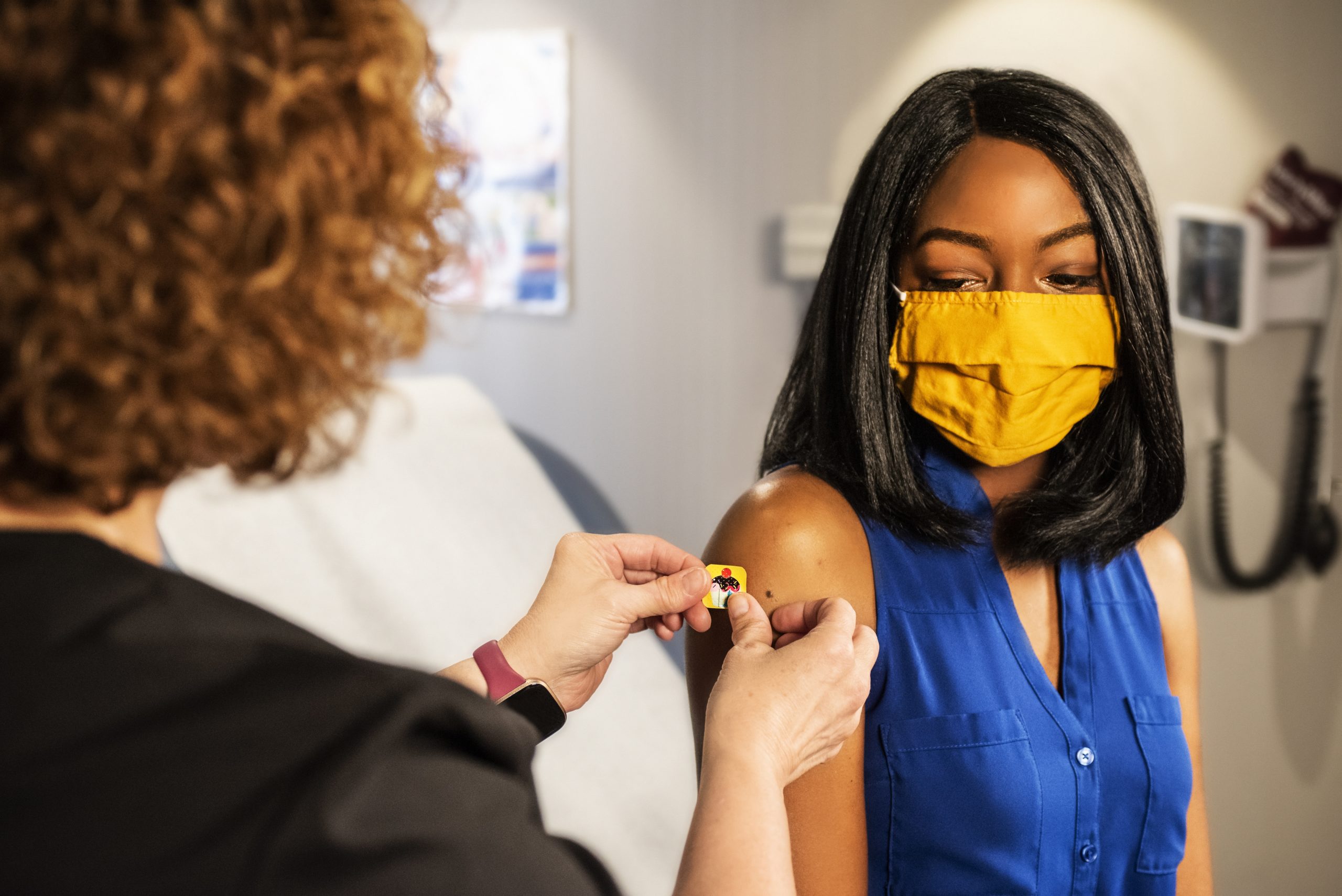By Sophia Kenward, SWHR Policy and Communications Intern
As more Americans receive their COVID-19 vaccines, reports suggest that women, on the whole, are experiencing worse side effects than men following vaccination.
Most prominently, distribution of the Johnson & Johnson vaccine was temporarily paused out of an “abundance of caution” after a very small number of women developed serious blood clots within two weeks of getting the shot. The U.S. resumed use of the Johnson & Johnson vaccine on April 23, following review of the incidents by the Centers for Disease Control and Prevention (CDC) and the Food and Drug Administration (FDA) that determined the vaccine is safe and effective.
Clinical data indicate that women and men show differences in adverse events, immune response, and disease protection following vaccination. As such, research on vaccines should consider the influence of sex and gender, said Dr. Santosh Dhakal, a research associate in the Department of Molecular Microbiology and Immunology at Johns Hopkins Bloomberg School of Public Health.
For the first 13.8 million COVID-19 vaccines distributed in the U.S., women made up 61% of vaccine recipients, yet they accounted for 79% of reported adverse side effects. Of those side effects, the most common in women included headache, fatigue, and dizziness. In addition, some women have experienced enlarged lymph nodes, which can also be a sign of breast cancer. Women are advised to schedule their routine mammograms before their first COVID-19 vaccine dose or at least one month after their second dose to ensure this benign vaccine side effect doesn’t prompt unnecessary medical testing or mistaken diagnoses.
“Most adverse events associated with COVID vaccines are very mild — sore arm, headache, fever, or tiredness, which are also observed with other vaccines,” Dhakal said. “The severe adverse events are very rare.” Physical reactions to the COVID-19 vaccines are common, normal, and a sign that the vaccine is working, he added. The vaccines are safe and effective, and the benefits outweigh the potential risks for most people.
While women tend to experience more vaccine side effects, men are more likely to develop severe complications from COVID-19 and have a heightened risk of death compared to women. These disparities are likely due in part to biological sex differences in immune response. “Based on experience with other viruses, differences in genetic factors, as well as sex hormones, play a role in greater robust immune response in women compared to men,” Dhakal said.
When it comes to sex hormones, men have higher levels of testosterone, which at high levels may weaken immune response to viral respiratory illnesses. Women have more estrogen and progesterone, which are known to boost immune response. Estrogen may also play a role in anaphylaxis, a rare but severe allergic reaction, that was reported in 66 people during the first month of COVID-19 vaccinations — 63 of them women. This is consistent with research on other vaccines, with one study finding that women accounted for 80 percent of all adult anaphylactic reactions to vaccines over a 30-year time period.
When looking at genetic factors, the X chromosome is home to a large number of immune-related genes. Women have two X chromosomes, while men have one X and one Y. Typically, one of the two X chromosomes is inactivated in every cell in women, but sometimes genes on the second X chromosome may escape inactivation. When this happens, women may experience what is, in effect, a double dose of immune function.
These biological factors may help explain why women produce more infection-fighting antibodies than men when vaccinated against a number of diseases, including influenza, yellow fever, rabies, hepatitis A and B, and measles, mumps, and rubella (MMR).
“The thought process that one-size-fits-all in vaccines and therapeutics should be changed,” Dhakal said. “By doing this, we could figure out if different dosing or different vaccine compositions would be more effective for women or men.” Disaggregating clinical trial data by sex and gender could ultimately help us understand and respond to disparities in vaccination more quickly.
See SWHR’s position statement on how to address sex and gender disparities related to COVID-19.
For more, read about sex differences and COVID-19, learn more about gender needs and national vaccination strategies, and find out what higher long COVID-19 rates may mean for women.
